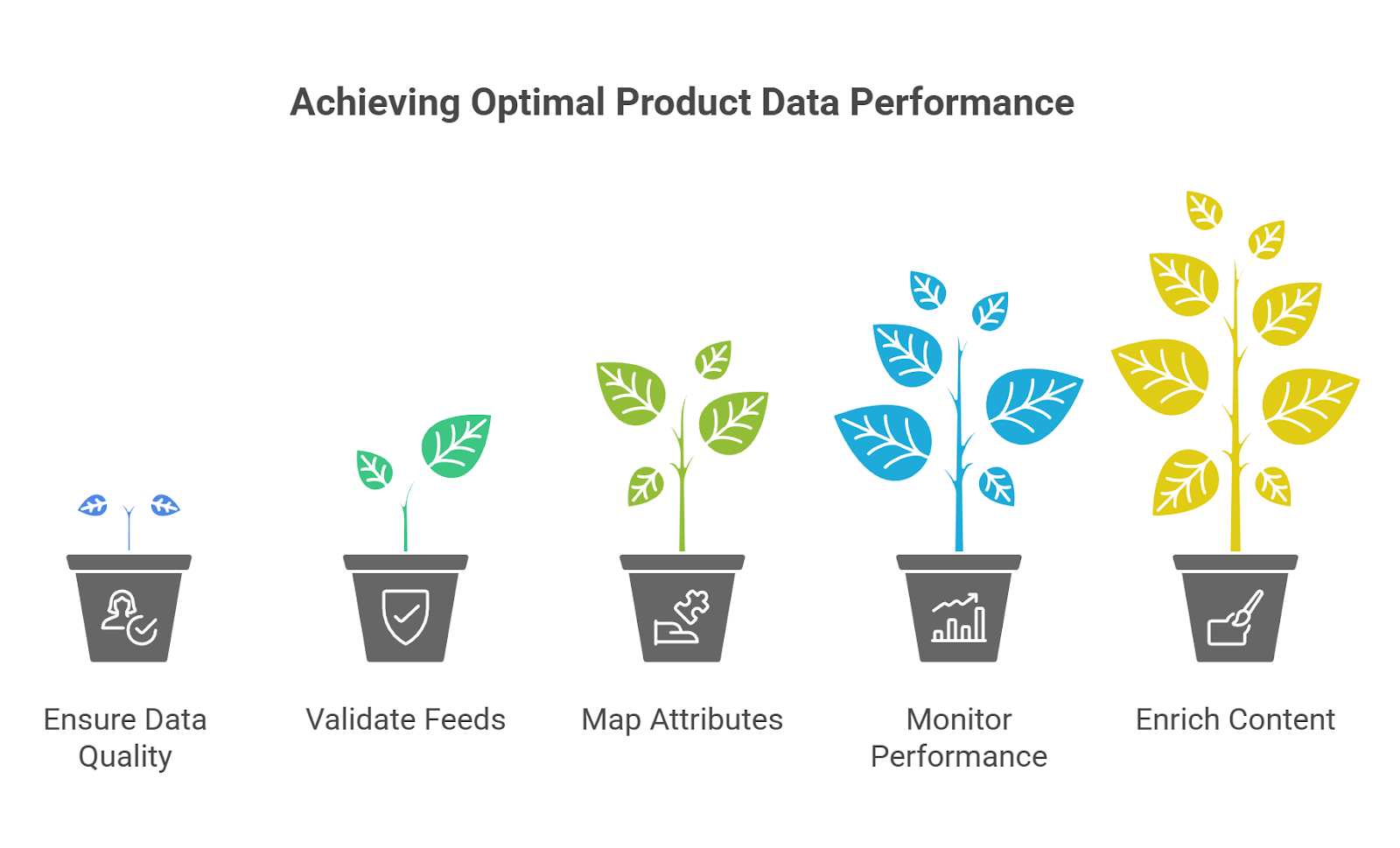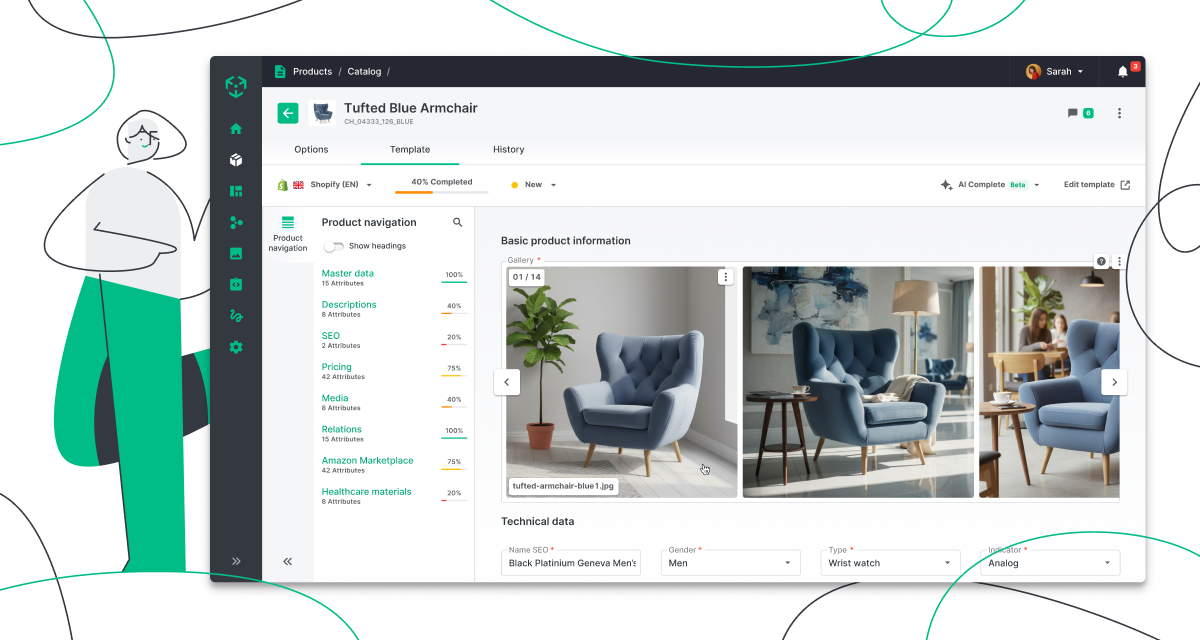Best Product Feed Management Software for Online Retailers

Best Product Feed Management Software for Online Retailers
In today’s fast‑moving e‑commerce world, managing your product listings across multiple channels is essential.
Across multiple marketplaces, plethora of ads, and a number of storefronts, manual methods quickly become error‑prone and inefficient. Product feed management software empowers online retailers to handle the complexity of distributing product data in real time.
This article will guide you through what product feed management software is, why it matters, what to look for, and how to pick the right one.
Get ready to stay ahead of the competition.
What Is Product Feed Management Software
Product feed management software is a specialized tool designed to help online retailers create, optimize, manage and distribute product data feeds. A product feed is a structured dataset (for example in CSV, XML or JSON format) containing product titles, descriptions, images, pricing, inventory, categories and other attributes.
Beyond simply listing products, this software automates the preparation of feeds for each sales channel. For example, what works for the Google Shopping feed might differ from what works for Meta (Instagram) or a marketplace like Amazon.
A product feed management tool ensures data is correct, optimized and tailored for each channel.
In short, the software centralizes your product data (often via integration with your PIM or other system), enriches it, and automates its distribution.
Key Features to Look For in Product Feed Management Tools
When comparing product feed management software, the following features are critical. These determine how well the software will support your business as you scale.
Here is a comparison table:
These features form the backbone of a modern feed management tool and help you move from manual spreadsheets to a high‑performance, scalable feed strategy.
Benefits of Using Product Feed Management Software
The advantages of adopting the right software go far beyond “less work”.
Here are the business benefits you’ll experience:
- First, the time savings and reduction of manual errors can be dramatic. Manually editing spreadsheets for hundreds or thousands of SKUs across channels is slow and error‑prone. A proper system automates much of that.
- Second, you’ll gain increased sales and visibility. Optimised feeds mean your products appear in more relevant searches, have better titles and descriptions and thus attract more clicks and conversions.
- Third, you improve the accuracy and consistency of product information across all channels. This builds trust with customers and reduces issues such as mismatched pricing or out‑of‑stock listings.
- Fourth, you gain agility. You can respond to changing inventory, pricing, promotions or new channels quickly and at scale, because the system handles updates automatically.
Together, these benefits make feed management software a strategic asset—not just a tool for operational efficiency.
Top Product Feed Management Software for Online Retailers
Here are some of the leading solutions available today, with different strengths and target use‑cases.
These software options differ in complexity, cost, scalability and feature set. Choosing the right one depends heavily on your business size, channel mix and growth plans.
How to Choose the Right Product Feed Management Software
Making the right selection requires a clear view of your current and future needs.
Here’s how to approach that decision:
First, consider your business size and product catalog complexity. If you manage thousands of SKUs and sell into many markets, choose a tool that scales accordingly. Next, evaluate how well each software integrates with your existing e‑commerce platform, marketplace channels and data systems (ERP, PIM, etc.). Seamless integration reduces friction.
Look closely at automation and optimisation capabilities.
Does the tool offer feed mapping, attribute enrichment, validation, and channel‑specific formatting?
The more automation, the less manual oversight required.
Analytics and reporting are critical.
A tool that provides insight into which products are underperforming, in which channels, gives you actionable intelligence.
Consider cost vs. ROI and how the software supports your growth.
A less expensive tool might suffice today but could become a bottleneck tomorrow. Scalability matters.
Finally, think about your internal workflow: who manages feeds, how frequently products change, what channels you plan to use. Align tool features with your team’s capacity and strategic goals.
Best Practices for Optimizing Product Feeds

Once you have a tool in place, the quality of the data and the optimisation you apply determine results.
Here are best practices to follow:
- Ensure your product data is complete, accurate and up‐to‐date. Missing attributes, inconsistent formatting or outdated inventory will hurt performance.
- Use automated feed validation to catch and correct issues before they reach channels. Regular audits of feed health protect from disapproval or low visibility.
- Map product attributes to each channel’s requirements. Titles that work for Google might not perform on Amazon or Meta. Ensure mapping rules adapt to the channel.
- Continuously monitor performance metrics: CTRs, conversion rates, feed errors, by‑channel performance. Use this data to optimize your feed further.
- Enrich your product content. Better titles, richer descriptions, high‑quality images, full attributes all support higher engagement and better results.
Integrating Product Feed Management with Your E‑Commerce Platform
Modern retailers benefit most when their feed management software is tightly integrated with a PIM (product information management) system.
As a platform that is API‑first and cloud‑native, your brand’s choice of such integration becomes a competitive edge.
By centralising product data in your PIM and then using your feed management tool to distribute optimized feeds, you ensure accuracy and consistency across all channels. Inventory, pricing or product changes made in one place flow automatically to all touchpoints.
This approach simplifies real‑time synchronization of inventory and product updates, reduces manual effort and improves the shopping experience for your customers.
Take Control of Your Product Feeds and Boost Online Sales
Product feed management software is a necessity for retailers who are seeking to scale efficiently and want to maintain visibility across multiple channels. By leveraging tools that offer automation, enrichment, multi‑channel distribution, analytics, and integration with your PIM, we can set your business up for success.
If you’re ready to streamline your product data workflow and unlock the full power of your catalog, consider how you can integrate a robust feed management solution with your existing systems today!






